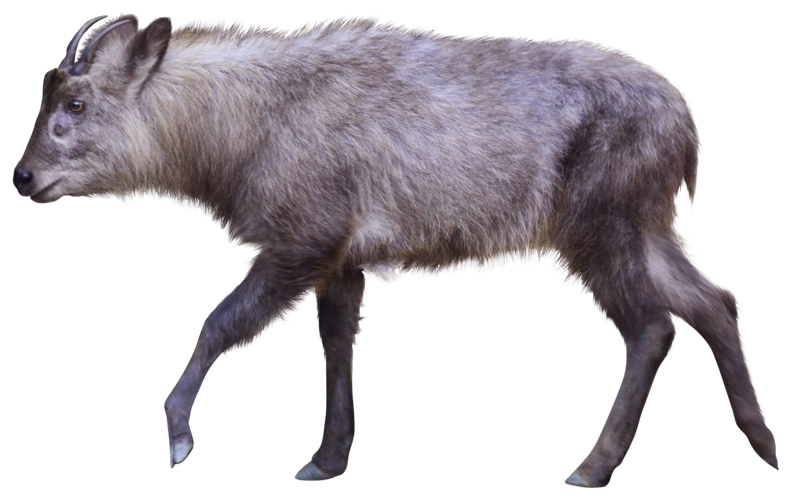
Capricornis crispus (Temminck, 1836)
「アオの寒立ち」とは
Blue standing in the cold
頭胴長(体長)105 – 112cm、尾長6 – 7cm、肩高68 – 75cm、体重30 – 45kg。日本固有種であり、特別天然記念物に指定されています。低山地から亜高山帯にかけてのブナ、ミズナラなどからなる落葉広葉樹林や混交林などに生息し、低木の葉や芽、小枝、花、実のほか、笹などの草木を食べています。
外敵を避けるために岩場や急傾斜の斜面を好みます。冬季、山中の斜面を数時間身じろぎもせずじっとしている様子は「アオの寒立ち」としても知られています。アオとはニホンカモシカの汗が青いことからマタギの間で呼ばれる名前です。
ニホンカモシカの顔を見ると目の下に別の目のように見える模様があります。これは眼下腺と言って、甘酸っぱい匂いの液を分泌し、機にこすりつけることで縄張りを主張するためにあります。また野生であっても決まった場所に糞をする習性がある行儀の良い動物です。
Its head and body length (body length) is 105–112 cm, tail length is 6–7 cm, shoulder height is 68–75 cm, and weight is 30–45 kg. It is endemic to Japan and designated a Special Natural Monument. It inhabits deciduous broadleaf forests and mixed forests consisting of beech and oak trees, from low mountain areas to the subalpine zone. It feeds on shrub leaves, buds, twigs, flowers, and fruit, as well as vegetation such as bamboo.
To avoid predators, it prefers rocky areas and steep slopes. In winter, its behavior of remaining motionless for several hours on mountain slopes is known as “Ao no Kandachi” (Blue standing in the cold). The “Ao” name comes from the fact that Japanese serow sweat is blue, a name given by matagi hunters.
If you look closely at the face of a Japanese serow, you will see a marking under its eye that resembles a second eye. This marking is called the subocular gland, and it secretes a sweet-and-sour liquid that it rubs against surfaces to mark its territory. Even in the wild, they are well-behaved animals that have the habit of defecating in specific places.
参考文献
美の国あきたネット | 特別天然記念物カモシカについて | (2024年2月7日) 2024年7月14日閲覧
矢口高雄『ニッポン博物誌』山と渓谷社〈ヤマケイ文庫〉、全1巻、2020年7月発行、ISBN 9784635048798
東山動物園 | 動物の仲間たち | ニホンカモシカ 2024年8月17日閲覧